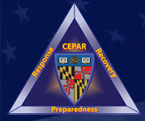

| SITE MAP |
CEPAR
Johns Hopkins University
5801 Smith Avenue
Davis Building · Suite 3220
Baltimore, MD 21209
Phone: 410.735.6450
Fax: 410.735.6440
Directions to CEPAR (PDF)
|
|
| |||||
| ||||||
|
Researchers at the Johns Hopkins and two other institutions performed a randomized 19-week study of patients at three hospittals to see if patients who did not require a previously defined critical intervention within four days were suitable for early discharge. They found that of 3,491 patients, 44% could be released if their beds were needed in an emergency. After factoring the likely continuance of nondisaster victim emergency admissions, surge capacity was estimated at 66%, 71% and 81%, respectively, with beds made available by reverse triage accounting for 50%, 55% and 59%, respectively. | |||||
| © Copyright 2008 · All Rights Reserved · The Johns Hopkins Health System | ||||||



